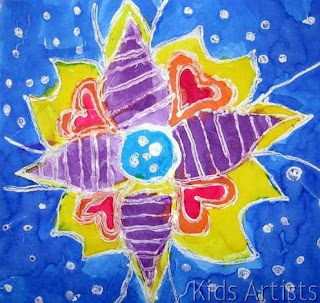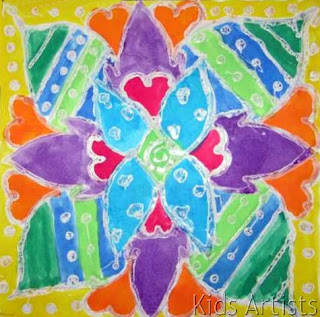Made by a student of 11 years old
You need:- white drawing sheet A4 size
- black construction paper A4 size
- tempera paint
- brush
- advertising leaflet with Christmas decorations or aluminum foil or scrapbooking paper
- glue
- glitter stars
- small piece of brown paper
Tear a trunk out of brown paper. Tear strips of the painted sheet that are about the same width. Place the paper strips on a black sheet in the form of a Christmas tree; the strips have to become slightly shorter. Put the trunk below the bottom strip and paste it. Paste the green strips, so that the trunk disappears partly under the lower strip.
Cut balls and a peak out of aluminium foil or advertising leaflets. You can also use scrapbooking paper. Paste balls and peak on the tree. Cut squares and rectangles (presents!) of coloured paper and paste them under the tree. Paste glitter stars around the tree.

.jpg)
.jpg)
.jpg)
.jpg)
.jpg)
.jpg)
.jpg)
.jpg)
.jpg)
.jpg)

.jpg)
.jpg)
.jpg)

+(Medium).jpg)
+(Medium).jpg)
+(Medium).jpg)
.jpg)
.jpg)
.jpg)
+(2).jpg)
+(2).jpg)
+(2).jpg)
.jpg)
.jpg)



.jpg)
.jpg)
+(2).jpg)

.jpg)
.jpg)
.jpg)
.jpg)
.jpg)
.jpg)
.jpg)
.jpg)
.jpg)
.jpg)
.jpg)
.jpg)
